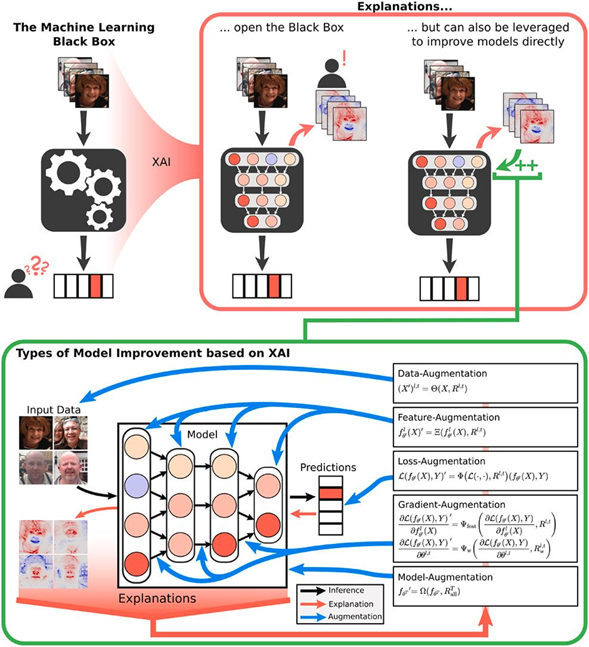Explainable Artificial Intelligence (XAI) can not only be employed to get an insight into the reasoning process of an Artificial Intelligence (AI) model.
The Information obtainable from XAI can also be leveraged algorithmically, e.g., for guiding a Neural Network during training towards a fair and unbiased use of features, or for increasing its time, memory and energy efficiency (by identifying safely removable non-functional network elements) after training has finished.
Within the recently published paper by Weber et al., (2022) “Beyond explaining: Opportunities and challenges of XAI-based model improvement”, the authors provide a timely survey on how XAI information may be harnessed apart from their illuminating qualities. The authors:
(1) show how and why XAI improves several model properties in toy experiments.
(2) develop a unifying theoretical framework for XAI-based model improvement.
(3) extensively review and discuss existing approaches that use XAI to improve models.
(4) provide experiment-supported practical recommendations for XAI-based augmentation.
To gain a complete overview on how your AI workflow may benefit from the incorporation from XAI feedback, the authors’ Open Access publication may be freely accessed at https://www.sciencedirect.com/science/article/pii/S1566253522002238.

Fig. 1 An overview on how XAI may be utilized to improve various aspects of Machine Learning or Artificial Intelligence, according to Weber et al. (2022).
Sebastian Lapuschkin, Fraunhofer Heinrich-Hertz-Institute.
This work was supported by the German Ministry for Education and Research (BMBF) [grant numbers 01IS14013A-E, 01GQ1115, 01GQ0850, 01IS18025A and 01IS18037A]; the iToBoS (Intelligent Total Body Scanner for Early Detection of Melanoma) project funded by the European Union’s Horizon 2020 research and innovation programme [grant agreement No 965221]; the Research Council of Norway, via the SFI Visual Intelligence grant [project grant number 309439], and UiO dScience – Centre for Computational and Data Science.
